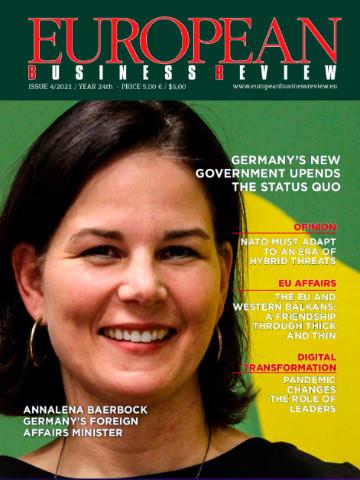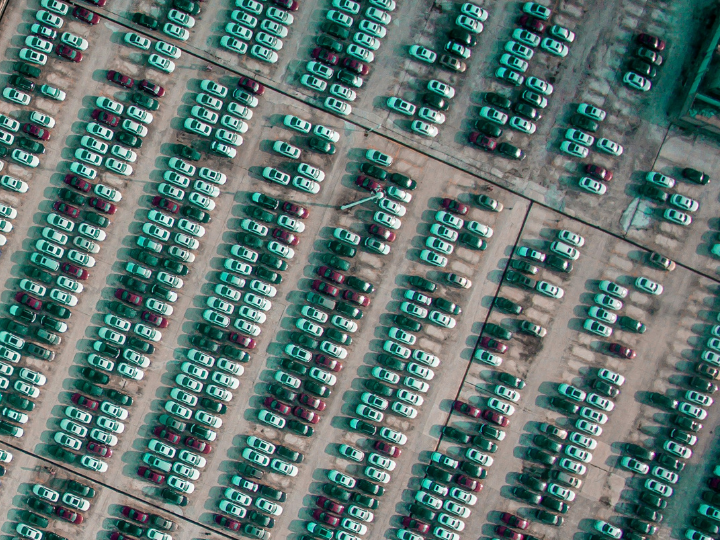Agriculture Commissioner Phil Hogan has launched a “diplomatic campaign” to find new markets for EU products. But external trade complexity and an unbalanced internal market pose serious challenges for the executive
by
Sarantis Michalopoulos
Hit hard by the Russian embargo and sluggish Chinese demand, over the course of the last two years, European agriculture has found itself in a difficult and complex market situation.
The European Commission is trying to find new markets for EU agricultural products, but at the same time, it is struggling to stabilise the internal market, which is suffering from a significant drop in prices.
The European Commission on Monday (18 July) announced a new €500 million aid package to tackle the unprecedented crisis in the EU’s dairy market.
The Russian embargo has put enormous pressure on already struggling European Union agricultural markets. Trade between Russia and the EU dropped by over €163.4 billion between 2013 and last year, and Union farmers and agricultural cooperatives lost their main export market overnight worth €5.5 billion.
The new Common Agricultural Policy for the period 2014-2020 is faced with a dual challenge: stabilising EU agricultural markets in the short term, while simultaneously finding new export outlets in the medium term.
Diplomatic initiatives
Agriculture Commissioner Phil Hogan has already led several trade missions to countries outside Europe to boost EU exports. In February, Hogan visited Colombia and Mexico. In April he went to China and Japan, while in the autumn Hogan is planning on visiting Indonesia and Vietnam.
EU sources told
EurActiv.com that promotional visits for next year were “under active consideration”.
“In each mission, I have been joined by a high-level delegation of representatives from EU agricultural and food businesses […] they meet their third country counterparts, and begin to forge the relationships that grow our mutual trade,” Hogan recently said during a speech at the Conference of the German Farmers’ Association, in Hannover.
According to Hogan, the EU’s export-driven mindset has substantially helped the promotion of products. EU agri-food exports are now worth over €120 billion annually, making the EU a leading player in global food sales.
Currently, the top five destinations for EU-28 agri-food exports are the US, China, Switzerland, Russia and Japan.
According to a report, the United States is by far the Union’s most significant trading partner, absorbing 15% of total exports and growing. In 2015, sales to the US grew by another 19% but the quickest growth was registered for China (+39%).
While in 2014 the growth seemed to stabilise (+2%), in 2015 the value of exports grew by more than €3 billion to reach €10 billion.
But EU farmers claim that the current CAP is not fully equipped to tackle crises in agricultural markets.
CAP is “inefficient”
Pan-European farmers’ association Copa-Cogeca told EurActiv that finding new markets is a top priority, but that it “takes time”.
Copa-Cogeca Secretary-General Pekka Pesonen noted that despite the fact that EU agricultural exports rose by 5.7% in 2015, EU farmers should be benefiting more from this gain. “Strengthening farmers’ positioning in the food chain has been marked as a priority by the Slovak presidency,” Pesonen stressed.
He added that written contracts were needed between producers, processors, and retailers, who must guarantee that farmers are given a fair price for their produce, and are paid on time.
Pesonen continued, saying that EU farmers need statutory legislation at EU level so that operators are fined when they break the law.
“We are already starting talks on the post-2020 CAP to ensure that we have a better agriculture sector in the future which is more capable of responding to agricultural crises. The current CAP does not have enough tools to ensure this. We need to develop tools at the farm level to help farmers better manage the risks of increasingly volatile markets,” Pesonen said.
Southerners most “interested”
In addition to the “diplomatic push”, the European Commission has also launched a promotional campaign for EU products, with some €111 million available under the 2016 budget.
The philosophy behind the scheme is to boost the agri-food sector’s competitiveness within the EU and support the growth of European quality foods worldwide, as approximately 70% of the budget is earmarked for third countries.
The Consumers, Health, Agriculture and Food Executive Agency (CHAFEA) is responsible for the approval and implementation of the proposals. The results are expected to be published at the end of September.
EurActiv has learnt that the number of applications widely exceeds the available budget. Approximately 228 proposals have already been submitted from 25 member states, with Southern Europe expressing enormous interest.
From Italy and Greece, 45 and 41 proposals have been respectively submitted, along with 27 applications from France. Sweden, Luxembourg, and Malta have not submitted any proposals, while Germany has a very low number considering the size of its market.
“Unfortunately, there has been limited interest from Germany, with only three proposals to date, and a rather modest number of programmes during the previous regime, certainly in view of the size of your agricultural sector,” Hogan stressed.
Milk crisis and global demand
The abolition of EU production quotas in April 2015, combined with the Russian embargo and dropping demand from China, led to a collapse in milk prices.
On 18 July, the Commission announced a new €500 million aid package to tackle the unprecedented crisis in the European Union’s dairy and livestock sectors. The package is more focused on supply, by compensating EU farmers for reductions in production volumes.
The European Commission on Monday (18 July) announced a new €500 million aid package to tackle the unprecedented crisis in the EU’s dairy market.
“Despite my commitment to identifying new markets and some encouraging export data, opportunities for increased demand are limited. Accordingly, more focus must come on the supply side,” Hogan stressed, underlying that the most recent price information available from the Milk Market Observatory shows that the average milk price in the EU in June was is still very low (27.4 c/kg).
The EU agriculture chief also quoted Milk Market Observatory experts as saying that market fundamentals have not really changed and that rebalancing supply and demand remains necessary.
The executive has ruled out any idea of reintroducing the milk quota, also on a temporary basis, as “politically is not an option and legally not possible”.
Heated debate in Germany
In Berlin, agricultural policy has been dominated by the ongoing milk crisis for months. Prices are at rock bottom, and more and more farmers fear for their livelihoods.
In April, milk production in Germany showed an average price of 25.78 cents, which did not even cover two-thirds of production costs, which are over 44.60 cents per kilogramme of milk.
However, German Agricultural Minister Christian Schmidt shares Hogan’s view that there should be no return to milk quota. He believes that if farmers do not cut down on milk production voluntarily, then they should not expect financial help from the EU.
But many German farmers have criticised the linking of these funds to reducing milk output as being unhelpful and urged the government to correctly allocate the aid package agreed on by the Agricultural and Fisheries Council directly to them.




 By: N. Peter Kramer
By: N. Peter Kramer

